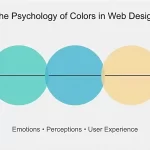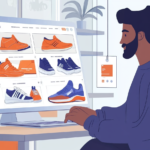The TL;DR for Chronically Rushed Readers
-
Your online presence is like a digital tattoo – make it count!
-
Personal branding isn’t just for influencers; it’s your career’s secret sauce
-
Social media: Use it or lose (job opportunities)
-
Content is king, but authenticity is the crown jewel
-
Networking online: It’s not just sliding into DMs (but sometimes it is)
-
Reputation management: Because the internet never forgets (unfortunately)
-
Consistency is key: Be the same awesome you across all platforms
Ever wondered what would happen if your online presence decided to run for office? Would it win in a landslide, or would it be caught in a scandalous tweet from 2009 that ruins its political career? Well, my fellow digital citizens, it’s time to take control of your online destiny and craft a personal brand that would make even the most seasoned politicians green with envy.
Why Your Digital Identity Matters (Or: How I Learned to Stop Worrying and Love the Google Search)
In today’s hyper-connected world, your online presence is like a 24/7 billboard advertising YOU™. It’s the first impression you make before you even shake hands (or bump elbows, depending on your pandemic etiquette). Whether you’re gunning for that dream job, trying to impress potential clients, or just want to avoid being mistaken for that other John Smith who has an unhealthy obsession with cat memes, your digital identity matters.
The Stalker’s Delight: Let’s face it, we’ve all done a little online sleuthing before meeting someone new. Employers, dates, and even that nosy neighbor down the street are probably Googling you right now. (Hi, Mrs. Johnson! Yes, those were my recycling bins on the curb a day early. I’m sorry!)
The Permanent Marker of the Internet: Unlike that regrettable tattoo you got in college, your digital footprint is here to stay. Every tweet, every LinkedIn humble-brag, and every TikTok dance challenge you’ve ever attempted is etched into the annals of internet history. So, let’s make sure it’s a history worth reading!
The Digital First Impression: In a world where first impressions are often made online, your digital identity can be the difference between landing that dream job and being lost in the resume black hole. It’s like showing up to a job interview in your best suit vs. your favorite pizza-stained sweatpants. Which version of you do you want the world to see?
Personal Branding: Not Just for Cattle and Celebrities Anymore
Think personal branding is only for Instagram influencers and Fortune 500 CEOs? Think again! In today’s job market, standing out is harder than trying to find a needle in a haystack… while blindfolded… and the haystack is on fire.
Your Personal Brand: The Spice to Your Professional Life
-
Authenticity is the New Black: Be yourself, but like, the best version of yourself. Think “you on a really good hair day” kind of authentic.
-
Consistency is Key: Like your favorite pair of stretchy pants, your brand should fit you perfectly across all platforms.
-
Find Your Niche: Are you the go-to guru for Excel spreadsheets? The wizard of work-life balance? The king of karaoke? Embrace it!
-
Tell Your Story: Everyone loves a good origin story. Unless you’re a superhero, then keep that secret identity under wraps.
-
Value Proposition: What makes you unique? It’s like being the only person who brings homemade cookies to the office potluck – people remember that!
-
Visual Identity: Choose a consistent profile picture and color scheme. It’s like picking a superhero costume, but with less spandex.
The Do’s and Don’ts of Personal Branding
|
Do |
Don’t |
|---|---|
|
Showcase your unique skills and experiences |
Try to be someone you’re not (unless you’re actually Batman) |
|
Use a professional-looking profile picture |
Use a blurry selfie from 2010 as your LinkedIn photo |
|
Craft a compelling personal story |
Bore people with a dry list of job titles |
|
Engage with your audience regularly |
Ghost your followers like a bad Tinder date |
|
Stay up-to-date with industry trends |
Cling to outdated practices like they’re the last slice of pizza |
Personal Branding in Action: A Tale of Two Job Seekers
Meet Sarah and Mike, both vying for the same marketing position:
-
Sarah’s LinkedIn profile is a masterpiece of personal branding. Her headline reads “Digital Marketing Wizard & Content Sorcerer,” immediately showcasing her creativity. Her summary tells a compelling story of how she turned her passion for storytelling into a successful marketing career. She regularly shares insightful articles and engages in industry discussions.
-
Mike’s LinkedIn profile, on the other hand, is the digital equivalent of a shrug. His headline simply states “Marketing Professional,” and his summary is a copy-paste of his resume. He hasn’t posted or engaged with content in months.
Guess who got called for an interview? (Spoiler: It wasn’t Mike.)
Social Media: The Good, The Bad, and The “Oh No, Did I Really Post That?”
Social media is like a Swiss Army knife for your personal brand – incredibly useful, but you might cut yourself if you’re not careful.
The Platform Parade: Choose Your Fighters
-
LinkedIn: For when you want to humble-brag about your professional achievements without seeming like you’re bragging. (Spoiler: Everyone knows you’re bragging.)
-
Twitter: Where brevity meets wit. Or in some cases, where brevity meets “I probably shouldn’t have tweeted that.”
-
Instagram: Because sometimes, a picture of your lunch is worth a thousand words. Especially if you’re a food blogger.
-
TikTok: For when you want to show the world you’re “down with the kids” (and simultaneously make them cringe).
-
Facebook: Where your aunt shares conspiracy theories and your high school classmates try to sell you essential oils.
-
YouTube: For when you need to explain something but are too lazy to write it out. Also, cat videos.
The Do’s and Don’ts of Social Media Mastery
|
Do |
Don’t |
|---|---|
|
Engage with your network regularly |
Spam your connections with cat videos (unless that’s your brand) |
|
Share valuable content |
Overshare about your personal life (we don’t need to know about your ingrown toenail) |
|
Be professional, yet personable |
Try to go viral with ill-advised stunts (leave that to the professionals, like Florida Man) |
|
Use proper grammar and spelling |
Type lIkE tHiS unLeSs yOu’Re quOTing a MeMe |
|
Respond to comments and messages |
Ignore your audience like they’re a telemarketer calling during dinner |
|
Post consistently |
Bombard your followers with 20 posts in one day, then disappear for months |
Social Media Strategy: A Choose Your Own Adventure
-
The Content Curator: Share interesting articles, infographics, and videos related to your industry. It’s like being the DJ of information – mix those tracks!
-
The Thought Leader: Share your own insights and opinions on industry trends. Just remember, with great power comes great responsibility (and occasionally, internet trolls).
-
The Networker: Focus on building relationships by engaging with others’ content and participating in online discussions. It’s like being the host of a digital cocktail party.
-
The Storyteller: Use your platform to share your professional journey, complete with ups, downs, and the occasional coffee spill on your white shirt before a big presentation.
-
The Educator: Create tutorials, how-to guides, or explainer videos in your area of expertise. It’s like being the cool teacher everyone wishes they had in school.
Social Media Fail: A Cautionary Tale
Remember Dave from accounting? He thought it would be hilarious to live-tweet his company’s confidential strategy meeting. Plot twist: It wasn’t hilarious, and now Dave’s looking for a new job. Don’t be like Dave.
Content Creation: Because “If You Build It, They Will Come” Doesn’t Work Anymore
In the realm of personal branding, content is your kingdom, and you are its benevolent (and hopefully interesting) ruler.
Types of Content: Pick Your Poison
-
Blog Posts: For when you have more to say than a tweet allows, but less than a full-blown novel.
-
Videos: Because sometimes, you need to see the crazy look in someone’s eyes to truly appreciate their passion.
-
Podcasts: For when you have a face for radio and a voice for… well, podcasting.
-
Infographics: For visual learners or people who just really like pretty pictures with their data.
-
Newsletters: Like a regular letter, but without the hassle of licking stamps. And hopefully more interesting than your great-aunt’s annual holiday update.
-
Webinars: It’s like hosting a TED Talk, but in your pajamas and with more technical difficulties.
-
eBooks: For when you have so much wisdom to share that it requires its own cover art.
The Art of Not Boring People to Death
-
Know Your Audience: Are you writing for CEOs or college students? Adjust your tone accordingly. (Hint: CEOs generally appreciate fewer emojis.)
-
Be Helpful: Solve a problem, answer a question, or at least provide a good laugh. Nobody wants to read 1000 words on why you prefer smooth peanut butter over crunchy.
-
Stay Current: Keep up with trends in your industry. But maybe don’t jump on every bandwagon – remember the fidget spinner craze?
-
Edit, Edit, Edit: Nothing says “I don’t care about my personal brand” like a typo-ridden mess. Proofread like your career depends on it (because it might).
-
Use Storytelling: Humans are hardwired for stories. It’s why we binge-watch Netflix shows instead of memorizing multiplication tables for fun.
-
Create a Content Calendar: Plan your content like you plan your meals. Otherwise, you’ll end up binging on junk food (or cat videos) at 2 AM.
Content Creation Do’s and Don’ts
|
Do |
Don’t |
|---|---|
|
Provide value in every piece of content |
Create clickbait that disappoints (looking at you, “This One Weird Trick” articles) |
|
Use a mix of content types |
Stick to one format like it’s your security blanket |
|
Engage with your audience’s comments |
Ignore feedback like it’s a telemarketer calling during dinner |
|
Repurpose your best content |
Plagiarize (seriously, don’t do it) |
|
Use eye-catching visuals |
Overload your content with flashy graphics that serve no purpose |
Content Creation Success Story: The LinkedIn Influencer
Meet Lisa, a project manager who started sharing weekly tips on productivity. Her consistent, valuable content caught the eye of industry leaders, leading to speaking engagements and a book deal. Now she’s a sought-after consultant, all because she decided to share her knowledge consistently. Be like Lisa!
Networking: It’s Not Just for Extroverts and People Who Enjoy Awkward Small Talk
Networking in the digital age is like dating – it can be awkward, sometimes painful, but ultimately rewarding. And just like dating, there’s an art to sliding into those professional DMs.
The Networking Ninja’s Toolkit
-
Join Online Communities: Find your tribe on platforms like LinkedIn groups, Reddit, or industry-specific forums. Just remember, trolls live under bridges, not in professional networks.
-
Attend Virtual Events: Webinars, online conferences, and digital meetups are goldmines for connections. Plus, you can network in your pajamas. Win-win!
-
Engage Meaningfully: Don’t just like posts – comment, share insights, and start conversations. Be the person everyone wants to talk to at the virtual water cooler.
-
Follow Up: Met someone interesting online? Don’t let that connection fizzle out like your New Year’s resolutions. Follow up, set up a virtual coffee chat, or share a relevant article.
-
Offer Value: Share your expertise, make introductions, or offer help. It’s like karma, but for your career.
-
Use LinkedIn Strategically: It’s not just for job hunting – it’s a powerful networking tool. Use it like a pro, not like your uncle who still thinks it’s Facebook.
-
Participate in Twitter Chats: It’s like speed dating for professionals, but with hashtags.
Networking Do’s and Don’ts
|
Do |
Don’t |
|---|---|
|
Personalize your connection requests |
Send generic “I’d like to add you to my professional network” messages |
|
Listen more than you talk |
Turn every conversation into a sales pitch |
|
Follow up after making a connection |
Ghost your new contacts like a bad Tinder date |
|
Share others’ content and achievements |
Make every post about yourself |
|
Be genuine in your interactions |
Fake interest just to get something in return |
Networking Success Story: The Conference Connector
Meet Tom, an introvert who dreaded networking events. He decided to volunteer at a virtual conference, which gave him a natural way to connect with speakers and attendees. By following up with thoughtful messages and sharing relevant content, Tom built a strong network that led to new clients for his freelance business. Introverts for the win!
Reputation Management: Because One Bad Tweet Can Ruin Your Whole Day (and Career)
Your online reputation is like a house of cards – it takes time to build, but one wrong move and it all comes tumbling down.
The Reputation Rescue Squad
-
Google Yourself: Regularly search your name and see what pops up. If you find anything unsavory, it’s time for damage control.
-
Set Up Alerts: Use tools like Google Alerts to monitor mentions of your name online. It’s like having a personal paparazzi, minus the unflattering photos.
-
Address Issues Head-On: If you find negative content about yourself, don’t ignore it. Address it professionally and try to resolve the issue.
-
Create Positive Content: The best defense is a good offense. Create so much positive content that any negative stuff gets buried deeper than your high school yearbook photos.
-
Manage Your Privacy Settings: Don’t let your Facebook party pics become your professional downfall. Lock it down!
-
Be Proactive: Build relationships with industry publications and contribute guest posts. It’s like planting trees to prevent erosion, but for your online reputation.
-
Apologize When Necessary: If you mess up, own it. A sincere apology can go a long way in repairing your reputation.
Reputation Management Do’s and Don’ts
|
Do |
Don’t |
|---|---|
|
Regularly monitor your online presence |
Assume no news is good news |
|
Respond to negative comments professionally |
Engage in online arguments or flame wars |
|
Create a crisis management plan |
Wait until a problem arises to think about your response |
|
Build a strong, positive online presence |
Rely solely on defensive strategies |
|
Be consistent across all platforms |
Present drastically different personas on different sites |
Reputation Recovery: A Comeback Story
Remember Sarah, the marketing whiz? She once accidentally tweeted a personal rant from her company’s account. Instead of panicking, she quickly deleted the tweet, posted a sincere apology, and followed up with a thoughtful blog post about the importance of work-life balance and social media management. The incident actually increased engagement and showed her human side. Now that’s turning lemons into lemonade!
The Grand Finale: Your Call to Digital Action
Congratulations! You’ve made it to the end of this epic journey through the land of personal branding and online presence. Now, armed with the knowledge of digital identity crafting, you’re ready to take the internet by storm (in a good way, not in a “I just posted a controversial opinion and now my mentions are a dumpster fire” kind of way).
Remember, building a strong personal brand and online presence is a marathon, not a sprint. It’s about consistent effort, authentic engagement, and maybe a sprinkle of well-timed humor. So go forth, be your best digital self, and may your personal brand shine brighter than a thousand LinkedIn endorsements!
Your Personal Branding Checklist:
-
Define your unique value proposition (what makes you special?)
-
Choose your primary social media platforms
-
Create a consistent visual brand (profile pictures, color schemes)
-
Develop a content strategy (what will you share and how often?)
-
Set up Google Alerts for your name and key topics
-
Start engaging with your target audience regularly
-
Create and share valuable content consistently
-
Network strategically online and offline
-
Monitor and manage your online reputation
-
Continuously refine and evolve your personal brand
Now that you’re armed with this checklist, it’s time to embark on your personal branding adventure. Remember, Rome wasn’t built in a day, and neither is a stellar online presence. But with persistence, authenticity, and a dash of creativity, you’ll be well on your way to becoming the next big thing in your industry. (Just don’t let it go to your head – we don’t need another Kanye West situation.)
The Art of Balancing Personal and Professional
In the world of personal branding, striking the right balance between your personal and professional life online can be trickier than walking a tightrope while juggling flaming torches. (Don’t try this at home, kids!)
The Personal-Professional Tango
-
Be Human, Not a Robot: Show your personality, but maybe keep your collection of cat memes to your personal accounts.
-
Share Your Passions: Love rock climbing? Great! It shows you have interests outside of work and aren’t just a corporate drone.
-
Mind the Overshare: We’re glad you’re excited about your new job, but posting 20 times a day about it might be a tad excessive.
-
The 80/20 Rule: Aim for 80% professional content and 20% personal. It’s like a mullet – business in the front, party in the back.
Personal-Professional Balance: A Cautionary Tale
Meet Alex, a brilliant software engineer who decided to merge all his social media accounts for “efficiency.” His professional contacts were treated to late-night party pics, while his friends got spammed with coding tutorials. Needless to say, Alex quickly learned the importance of audience segmentation.
The Future of Personal Branding: Embracing New Technologies
As technology evolves faster than you can say “blockchain,” staying ahead of the curve is crucial for maintaining a strong personal brand.
Emerging Trends in Personal Branding
-
Virtual Reality Networking: Imagine attending a networking event as your avatar. No more sweaty handshakes!
-
AI-Powered Personal Branding Assistants: “Alexa, post a witty but professional tweet about industry trends.”
-
Blockchain Verified Credentials: No more embellishing your resume – your achievements will be set in digital stone.
-
Holographic Presentations: Take your personal brand into the third dimension. Just don’t wear green if you don’t want to disappear.
Remember, embracing new technologies doesn’t mean abandoning the fundamentals. Authenticity, value, and engagement will always be the cornerstones of a strong personal brand, whether you’re tweeting or hologramming.
The Last Word (We Promise)
Building a personal brand and strong online presence isn’t just about self-promotion – it’s about creating value, fostering connections, and contributing to your professional community. It’s your chance to leave a digital legacy that’s more impressive than just being the person who always brings donuts to the office (although that’s pretty awesome too).
So, whether you’re a social media novice or a LinkedIn legend, remember that your personal brand is a reflection of your best professional self. Nurture it, grow it, and watch as doors open, opportunities arise, and your career soars to new heights.
And if all else fails, just remember: At least you’re not trying to explain to your grandma what an “influencer” is. Now that’s a personal branding challenge.
Now go forth and conquer the digital world, you magnificent, brand-savvy professional, you!
Relevant Reads:
-
From Zoom Fatigue to Virtual Virtuoso: Mastering the Art of Online Networking
-
The LinkedIn Makeover: Transforming Your Profile from Blah to Brilliant
-
Content Creation for the Chronically Uncreative: Unleashing Your Inner Influencer









